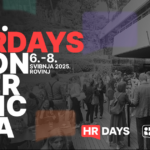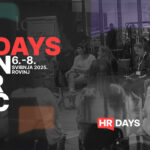
Unplanned or unwanted employee departures, especially those of the highest quality, can threaten and shake our business. Come to the 12th HR Days conference and discover how to hire candidates who will fit perfectly into our team. And who will stay in it despite potential "immoral offers".
The assumption is that at least 30 percent of all products purchased online are returned to the sender. No big deal, right? People often change their mind, the product is simply returned, and the retailer can sell it again later.
Unfortunately, and all those in charge and responsible for selection processes, i.e. employment, know this, we "struggle" with similar percentages in the colorful world of human resources. It's just that it's not about the return of goods, it's about - people.
According to data published on BambooHR.com, as many as 31 percent of employees has resigned within six months of employment during their career. Bearing in mind that the unwanted departure of an employee can cost the company up to 4 times (!) the annual salary of the employee who left, it is clear how important it is to find the right fit and take care of our employees.
As part of the upcoming HR Days conference, which will on 8. and 9. of May in Rovinj gather the regional HR community, we decided to tackle this burning challenge in a comprehensive way, by learning based on real experiences and getting to know practical and applicable solutions.
Hiring those "who will stay"...
Dr. Maggi Evans will help us with this. This unsurpassed author, business consultant and communicator, will do a 'double job' in Rovinj.
With her lecture Transforming Underachievers & Getting Everyone on the Pitch, she will open the door behind which the answer to the question "How to awaken hidden talents and restore motivation to your employees?" is hidden.
On the other hand, the workshop Driving profit and increasing predictive validity in recruitment under her leadership will emphasize the recruitment of candidates who will shine brightly in our team. And stay in it.
The workshop lasts two hours, and its focus will be on a case study, that is, the story of one of Dr. Evans' clients who was unable to hire people in sales who would be successful and/or who would remain in the company's team for a long time.
With the support and advice of Dr. Evans and the exchange of opinions with other workshop participants, you will find answers to the following questions:
1. How to really understand the problem and recognize the opportunities?
In this case, the client recognized that their sales recruiting process was not working. They chose people who either weren't successful or didn't stay long. This created costs for them. They also noted that the best sales representatives with long-term experience contribute significantly to the company's overall revenue. So they wanted to improve the selection of great sales reps to stay.
2. What does brilliant look like?
Sljedeći korak bio je razumjeti što čini razliku – koje su vještine, pozadine, motivacije i iskustva najboljih izvođača? Što je drugačije kod tih ljudi u usporedbi s manje uspješnima? Pojavili su se neki iznenađujući rezultati koji su pokazali zašto prethodni pristupi nisu djelovali.
3. Can we consistently select excellent people?
Dr. Evans developed a comprehensive approach to recruitment aimed at increasing predictive validity. This included interviews, psychometrics and work samples.
4. In what ways can we access new talent?
With a clear understanding of the real differences between the candidates, we could identify all the places we could find suitable candidates? This has opened up new places to find talent, expanding the pool beyond those with experience in the sector (in this case, putting more emphasis on people who are fast learners).
5. How to implement, root and perfect?
The final phase (and it is still ongoing) was dedicated to training, communication, implementation and gathering feedback (from the business, candidates and the recruitment team). We used data to monitor impact and refine our approach.





